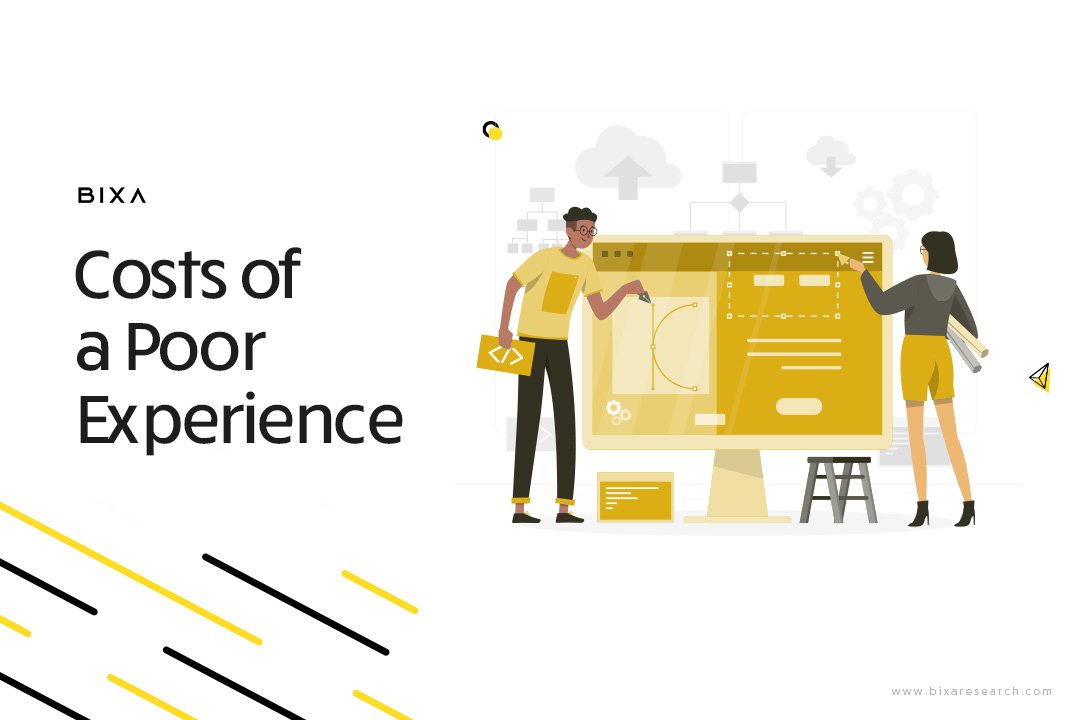ROI Stats for Your Stakeholders: The Numbers Every UX Professional & Market Researcher Needs to Know
Years ago I was at dinner with Steve Krug, one of the forefathers of “usability” — for those new to the industry, “usability” is what “UX” used to be called before the industry as a whole realized that it wasn’t just about whether someone CAN use a site; it’s about whether they WILL.
He said something that always stuck with me: that he will not do business with companies that ask him to “prove” or “justify” the ROI of usability to their stakeholders. He said he enacted this policy because he was spending all his time convincing people of this industry’s worth, versus just doing good work and letting it show for itself.
I get his point, and perhaps if you wrote one of the books that pivotally moved this industry forward like Don’t Make Me Think or Rocket Surgery Made easy, you might think differently about the ROI of UX. However, for me, I found this odd because in my experience working with enterprise organizations, nearly every large company goes through this exercise at some point of justifying financially the ROI of their research. Businesses want to know that their sizable investment in research is going to yield results that truly matter to them.
“Businesses want to know that their sizable investment in research is going to yield results that truly matter to them.“
— Sarah Weise
ROI of UX Research Leading to a Better Experience
Research shows that, on average, every $1 invested in UX brings $100 in return. That’s an ROI of a whopping 9,900%. (Forrester)
The top 10 companies leading in user experience outperformed the S&P index by 35%. (Forbes)
A well-designed user interface could raise your website’s conversion rate by up to a 200%, and a better UX design could yield conversion rates up to 400%. (Forrester)
If you utilize UX design to satisfy enough people to boost your customer retention by as little as 5%, you will be rewarded with a profit increase of at least 25%. (InTechNic)
Companies that were less invested in UX (they considered themselves simply “design-centric”) still saw their sales increase by 60%. (NEA)
A 2016 design study of 408 different companies found that the more a company invested in and focused on design, the more sales they saw. (NEA)
23% of customers who had a positive experience told 10 or more people about it.
When UX improves the customer experience, it raises a company’s KPIs up to 83% in conversion lift. (Harvard Business School)
8 in 10 customers are willing to pay more for a better customer experience. (Cagemini)
Costs of a Poor Experience
Companies lose $62 billion every year due to poor customer service. (NewVoiceMedia)
70% of customers abandon purchases because of bad user experience. (Baymard)
67% of customers claim unpleasant experiences as a reason for churn. (Forbes)
91% of non-complainers just leave and 13% of them tell 15 more people about their bad experience. (InTechNic)
Slow-loading websites cost retailers more than $2B in lost sales each year. (InTechNic)
62% of customers say they share bad experiences with others. (Salesforce)
79% of people who don't like what they find on 1 site, will go search for another site. (InTechNic)
ROI of Improved Customer Journeys
70% of the customer journey is completed before a buyer reaches out to sales. (WBR)
Today customers manage 85% of their relationships without interacting with a human. (Gartner)
Tracking customer journeys in real time is key to delivering on customer expectations, yet 2/3 of organizations lack this capability. (Hanover Research)
Over 75% of customers prefer self-service. (Lotus Studios)
70% of buyers return to Google at least 2-3 times during the course of their research. (Pardot)
89% of consumers use the internet to find information on products, services or companies before purchasing. (Forbes)
90% of consumers say buying decisions are influenced by online reviews. (Dixa)
86% of senior-level marketers agree that it’s critical to create a cohesive customer journey. (Salesforce)
33% who ended their relationship with a company did so because the experience wasn’t personalized enough. (Forbes)
ROI of Effective Audience Segmentation and Persona Research
84% of customers say being treated like a person, not a number, is very important to winning their business. (Salesforce)
76% of consumers think companies should understand their expectations and needs. (Salesforce)
In the case of Intel, Buyer personas surpassed campaign benchmarks by 75%. (InTechNic)
In one case, Buyer personas resulted in 177% increase in marketing generated revenue. (InTechNic)
Teams using personas can gain an ROI of 4X from using them in a redesign. (InTechNic)
"Almost 1/3 of enterprises polled by UserZoom are conducting research either weekly or bi-weekly; 67% are conducting research every month". (UserZoom)
Demand for UX research (by enterprises polled) has increased by 30% in the last 12 months. (UX Tools)
51% of enterprises polled saw an increase of 25% in their UX research budget. (InTechNic)
Even more compelling than stats are real business cases demonstrating the value of UX…
Stories always stick in the minds of your stakeholders better than stats alone. Here are a few that have stuck with me over the years:
AirBnb Turned Around a Failing Company and Scaled to $10B Because of UX Testing
AirBnB’s Mike Gebbia credits UX with taking the company to $10 billion. In 2009, Airbnb was close to going bust. Like so many startups, they had launched but barely anyone noticed. The company’s revenue was flatlined at $200 per week. Split between three young founders living in San Francisco, this meant near indefinite losses on zero growth. After testing proved that poor photos were to blame, the company tried an “unscalable” approach of taking professional photos of many of their listings. It worked, and the company took off from there and has never looked back, investing constantly into UX research after this point in time.
Lego Launched a Line for Girls
2012 concept tests showed that girls preferred sets to stand-alone structures, and focused on interior layouts and decorative exterior details. As a result, they launched a new line of Lego Friends, skyrocketing this segment from $300 million to $900 million in 2014.
Yamaha Saved Weeks of Debate
The design team at Yamaha struggled to decide knobs vs. sliding faders for the Montage keyboard. A concept test with just 400 musicians saved weeks of internal debate when an overwhelming majority meant a decision in just 1 day.
NASCAR Validated a New Race Format
NASCAR concept-tested a new race format in 2017. Feedback was critical since ad revenue is based on viewership. 200 super-fans validated the change and provided vital insights so they could launch the new race format successfully.
Yamaha Saved Weeks of Debate
The design team at Yamaha struggled to decide knobs vs. sliding faders for the Montage keyboard. A concept test with just 400 musicians saved weeks of internal debate when an overwhelming majority meant a decision in just 1 day.
Tesla (Model 3) Asked for Real Money
This one just might be my favorite! Tesla launched in a concept test, with price included. They not only gained feedback, they also asked for $1,000 deposits for this future car. As a result, they raised $400M, validating the concept AND generating 10 percent of the company's total revenue for FY15.
Investment in the First Year of Amazon
Jeff Bezos invested 100X more into customer experience research than into advertising during the first year of Amazon, and it paid off big-time!





